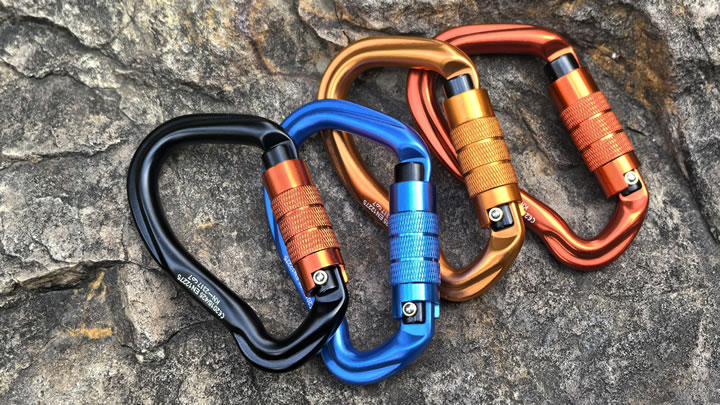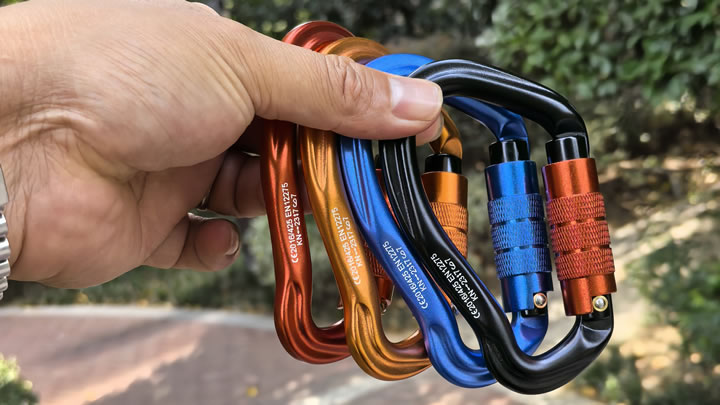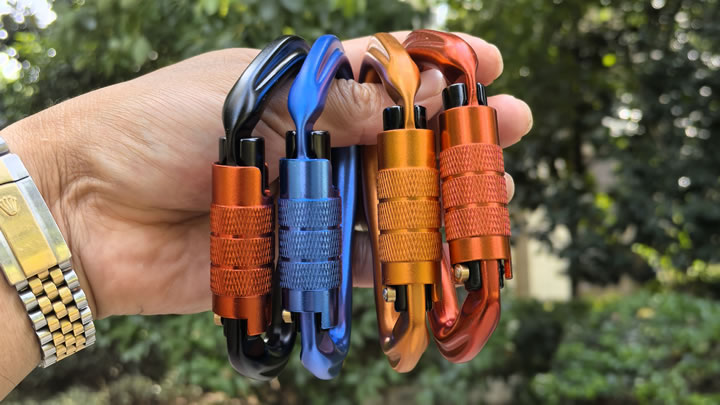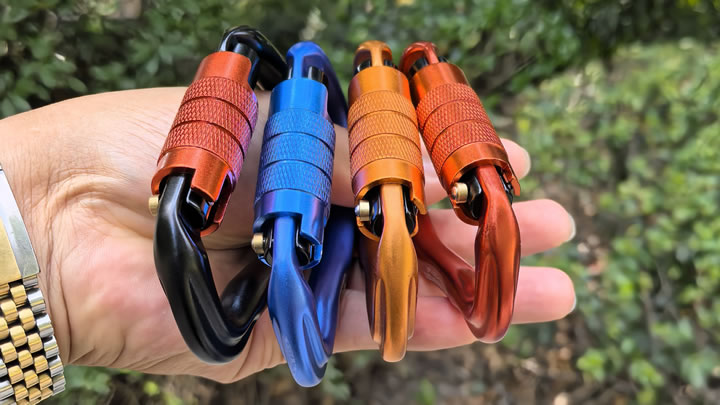Are titanium climbing swivel rings better than steel?
In the thrilling world of rock climbing, every piece of equipment is a crucial link in the chain of safety. Among these, the climbing swivel ring plays a vital role, allowing for smooth rotation and reducing the risk of rope twisting. However, like any gear exposed to the rigors of climbing, swivel rings are prone to wear and tear. Regularly testing them for signs of degradation is not just a good practice; it's an absolute necessity for ensuring a safe climbing experience.

Visual Inspection: The First Line of Defense
The simplest yet most fundamental method of testing a climbing swivel ring for wear is through a thorough visual inspection. Before each climb, carefully examine the swivel ring in good lighting conditions. Look for any visible signs of damage such as cracks, dents, or deformities on the surface of the ring. Cracks, no matter how small, can be a major red flag as they can significantly weaken the structural integrity of the swivel ring. Even a hairline crack could potentially lead to catastrophic failure under the stress of a fall.
Pay close attention to the areas where the ring rotates. Check for signs of excessive wear, such as grooves or smooth spots. If the surface appears uneven or shows signs of metal being worn away, it's a clear indication that the swivel ring has seen better days. Also, inspect the connection points where the rope attaches to the swivel ring. Look for fraying or abrasion on the rope itself in these areas, as this can also be a sign that the swivel ring is not functioning properly.
Checking for Smooth Rotation
A key function of a climbing swivel ring is its ability to rotate freely. To test this, hold the swivel ring by one end and gently spin the other. The rotation should be smooth and effortless. If you feel any resistance, stiffness, or hear unusual noises such as grinding or clicking, it's a cause for concern. Resistance in rotation can be due to a variety of reasons, including dirt and debris getting stuck in the moving parts, or wear and tear on the internal bearings (if the swivel ring has them).
If the swivel ring has a locking mechanism, test it as well. Ensure that it locks and unlocks smoothly and securely. A faulty locking mechanism can be just as dangerous as a worn-out swivel, as it may fail to hold the rope in place when needed.
Measuring Wear and Tear
For a more in - depth assessment, you can use some simple tools to measure the extent of wear on the swivel ring. If the swivel ring has threads (for example, if it screws into a climbing anchor), use a thread gauge to check for thread wear. Worn threads may not hold as securely, increasing the risk of the swivel ring coming loose during a climb.
If the swivel ring has a bearing or pivot point, you can measure the clearance between the moving parts. An increase in clearance can indicate that the parts are wearing out. However, this method requires some knowledge of the original specifications of the swivel ring to determine if the measured clearance is within acceptable limits.
Considering the Environment and Usage
The environment in which you climb and how often you use your equipment also play a significant role in the wear and tear of your climbing swivel ring. If you frequently climb in areas with harsh weather conditions, such as salt - laden sea air or abrasive desert sand, your swivel ring is likely to degrade more quickly. Salt can cause corrosion, which weakens the metal, while sand can act as an abrasive, wearing down the surface of the ring.
Similarly, if you are an avid climber who uses your equipment frequently, the swivel ring will naturally experience more wear. High - use scenarios, such as indoor climbing gyms where the swivel rings are used by multiple climbers throughout the day, can accelerate the wear process. In such cases, it's important to increase the frequency of your inspections.
When to Retire a Swivel Ring
Once you've identified signs of wear and tear on your climbing swivel ring, the next question is when to retire it. As a general rule, if you notice any cracks, significant deformation, or if the swivel no longer rotates smoothly, it's time to replace the swivel ring. Even if the damage seems minor, remember that climbing gear is subject to extreme forces during a fall, and a seemingly small flaw could lead to a major failure.
If you're unsure whether a swivel ring is still safe to use, consult the manufacturer's guidelines or seek advice from a professional in the climbing gear industry. Many manufacturers provide information on the expected lifespan of their products and what signs of wear to look out for.
Testing a climbing swivel ring for wear and tear is an essential part of maintaining your climbing equipment. By performing regular visual inspections, checking for smooth rotation, and considering the environmental and usage factors, you can ensure that your swivel ring remains in good working condition. Remember, in climbing, the safety of yourself and your climbing partners depends on the integrity of your gear, and a well - maintained swivel ring is just one part of that equation.






